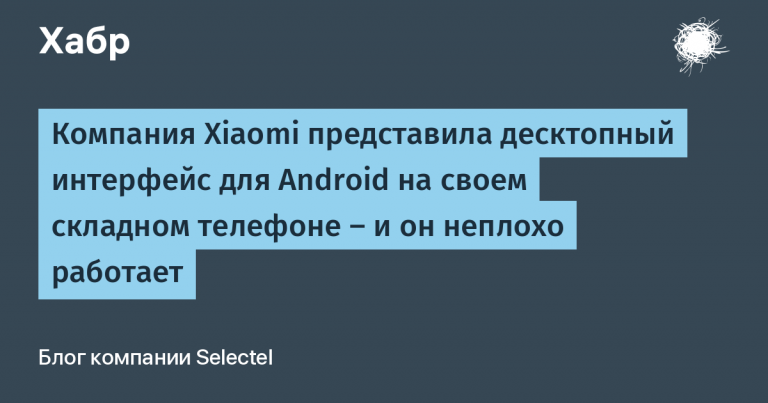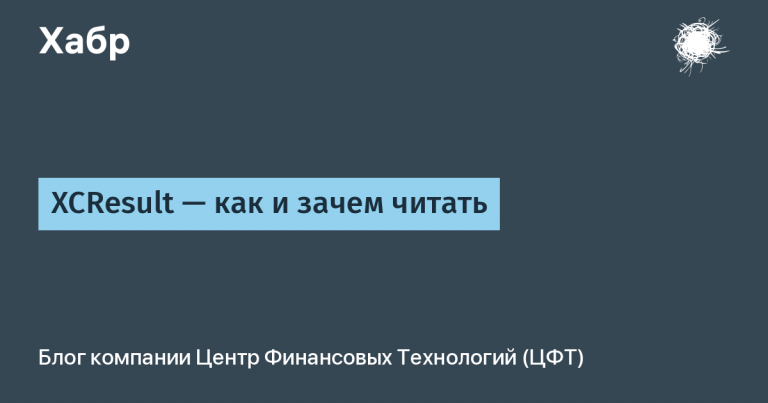Import substitution – a view from operation. What's wrong with him. Part one and last. Servers
testing with a strange opinion, quote:
In the case of OpenYard, responses from support come quickly. For example, at the time of testing, neither on the official website nor in the public domain we found documentation and microcodes of the server components, information on warranty replacement of spare parts, or a server compatibility matrix with the OS and software of various manufacturers.
NB!: And there is nothing surprising or critical in this! Our experience of working with Russian vendors shows that the lack of publicly available documentation is an absolutely normal practice.
I don’t see anything normal in the lack of documentation. There is practice, but what is normal about this?
In terms of the degree of “we don’t care what you think about us” – in first place is the combination Graviton plus helius.rf. Let's go to https://graviton.ru/from there to products – hyperconverged solutions, and immediately redirects to https://gelius.rf/
God bless him with a free certificate from LE for three months, but directory called “unnamed-1” at the link – it's five. The catalog also includes a little-known manufacturer Elvis (well, little-known. They promised something for satellites, but it didn’t work out even at 180 nm, they were promised to be punished in 2022). For the civilian market, processors were also made on TSMC, 40 nm, ARM Cortex-A9 – 1892VM14Ya (MCom-02), catalog for 2017 here.
However, a more or less complete catalog from Graviton is available as a PDF on the Helius website. A very, very obvious solution. The only thing better is the claimed support of 9/5.
As for the catalog, the pdf design is scattered throughout the text, made in the “it will do” style, diluted with grammatical errors such as “buschem” or “Intel® Xeon® Scala” mutants.
The mathematics in the document is also of interest – for example, for 1U servers
Chipset / Generation C621
Memory capacity Up to 4 TB
Number of connectors 8 slots for installing DIMM modules
Supported DDR4 RDIMMs: 64GB, 32GB, 16GB, 8GB, LRDIMMs: 128GB, 64GB
How can you collect 4 TB in 8 slots of 128 GB? And which processor, I wonder, is proposed to be installed from these generations?
The Administration section was also a success. Specified:
Astra Linux® Special Edition 1.6; 1.7 release Smolensk
Viola 8 SP Server; Alt Server 9.1
RED OS 7.2 MUROM
Windows Server® 2019 Standard
Windows Server® 2020 Standard
Windows Server® 2016 Standard
CentOS 6; CentOS 7; FreeBSD 11; VMware ESXi 6.5; VMware ESXi 6.7
Not very clear. The document is from 2022, it may simply be outdated, but support Windows Server Datacenter and Windows Server Datacenter: Azure Edition – too complicated.
What is on the Graviton website itself? I'll look at the Graviton servers S2082I/S2122I/S2242I
What they write:
The server supports 205W CPUs, low latency NVMe storage, and up to two powerful graphics processing units (GPUs) in a 2U chassis
Note from the documentation: Up to five GPUs dissipate heat up to 75 W in a 2U case.
It’s not very clear how to understand this – as 5*75 and only 375, or as 15*5 and only 75.
one NVIDIA A10 is already 150 W
Advanced features: 4 network ports.
A nuance from the documentation: this is 4x 1 Gbit/s RJ-45
Operating system, quote
Alt 8 SP Server, Alt Server 9.1, VMware ESXi 6.7, Windows Server® 2016 Standard, Windows Server® 2019 Standard, Edited by OS Moore
Again, there is no need to talk about support for Datacenter and Datacenter: Azure Edition and VMware by Broadcom 7\8.
But there is sound on the server, and, quote:
MicroSD slot with use as a boot drive and hypervisor support, special internal SATA DOM drives
I wonder which hypervisor exactly? There are a little more than 1 of them, hypervisors, and even a little more than 2.
There is no documentation for BIOS\BMC\IPMI. At all.
There is no documentation on operation, launch and mass update. At all.
There are no templates for Zabbix or descriptions of SNMP\OID. At all.
Bottom line
At first I wanted to write an article “oh everything is gone, complete rubbish.”
But. The situation is more complicated. The equipment itself is produced, and not “complete rubbish”. Not “top 5”, but it doesn’t immediately emit magical white smoke.
But everything else, except the equipment itself, is some kind of quest, and not at all the level of “Elephant kidnapping” Although, maybe it’s in the part where you need to open the refrigerator. There are almost no reviews, there are no compatibility tables with other equipment. There are no basic things like SNMP\OID.
The same applies to “import-substituting derivatives” – there is something from the documentation on OS + server compatibility, but
– not even close to Windows Server Catalog or VMware Compatibility Guide in terms of volume and quality,
– disgustingly designed, without recommendations on component settings, versioning, drivers, etc.
Integrators sometimes still manage to assemble stands and catch some problems or compare settings, and Rostelecom-DPC\Dataline published a useful article very timely: How we test servers, and it seems that they know a lot about the sore spots.
But without integrators, dealing with all this diversity and possible problems will be not only difficult, but also expensive – we need specially trained people, but they are greedy and will not accept the promise of a certificate or signature rights of a “true architect”, no matter how hard you move your hands. This type of magic works mainly for juniors, not for seniors Toydarians.
I don’t envy those who will work with this – they won’t give any more money, and the qualifications will be reduced to working with special cases of one of 20 – 30 vendors. A dead-end development branch for a specialist, which can also close at any time.
While the article was being written, various interesting things were found.
Outside the competition, the Russian Science Foundation is competing in the “What Was That, Holmes” category.
At the end of 2022, the Fund placed Notice of request for quotation for the supply of network equipment and performance of work to update the IT infrastructure # 000152
With items such as:
Router Star ZRT-8140-12G10XG, 10 ports 10GE(SFP+), 8 ports GE Combo, 4 ports GE Copper, 1*USB3.0, 4*SIC, 2*PS 350W AC, 3m cable RJ45-to-DB9, 3m cable SFP+ 10G CC2P0.254B(S), 2*SFP GE RJ45
Marking 8140-12G10XG has Huawei NetEngine AR8140-12G10XG (8 x GE combo, 4 x GE electrical, 10 x 10 GE optical (all WAN ports can be configured as LAN))
Switch Star ZSW-6300-H28Y4C28 ports 25GE SFP28, 4 ports 100GE QSFP28, 2*PS 300W AC, Basic SW, 2*SFP GE RJ45
What could it be? Is it really Huawei CloudEngine S6730-H 25GE S6730-H28Y4C ?
Switch Star ZSW-5320-H48UM2CC, 48 ports 100M/1G, 4 ports 25GE – Is it really Huawei CloudEngine S5732-H48UM2CC?
Access point Star ZAP5711 – is it really Huawei AirEngine 5761-11 Access Point?
Access point Star ZAP6721 – really Huawei AirEngine 6761-21T Access Point?
Controller Star ZAC6508 – really Huawei AC6508 Access Controller?
Router Zvezda ZRT-8140-12G10XG – is it really Huawei NetEngine AR8140-12G10XG?
What kind of network equipment manufacturer is this, Zvezda, which, apart from this purchase, is not found anywhere?
There is also such a manufacturer as Russian access switches – Vector Technologies with switches VA2100-48P-4X or VA2100-48T-4X. I wonder where I saw the marking “48T-4X”, who could it be?
After such purchases, lines like:
Experience with Zvezda hypervisors and Zvezda routers.
Notes and additions
Import substitution in practice. Part 1. Options
Import substitution in practice. Part 2. Beginning. Hypervisor
Import substitution in practice. Part 3. Operating systems
“The mice cried and injected themselves..” Import substitution in practice. Part 4 (theoretical, final). Systems and services
Note
As repeatedly exposed by vigilant commentators (for some reason, mostly with yesterday’s registration or the day before yesterday’s unfreezing and the first comment in 2023 after silence since 2014-2015), I cannot help but note that “import substitution” is not only stalled, but rather en masse does not go anywhere beyond exhibitions, news, conversations and reports about successful implementation. The point is not so much the availability of a turnkey box for business (there isn’t), and not the price (as if it’s not more expensive than HPE\Dell even now), the point is that the products, from hardware to software, are really “not very good”. The promotion of IZ has never been carried out using market methods, but in the current command-administrative system, the consumer\performance qualities of equipment are not of fundamental importance. What will they say from above (strongly recommend, or make an offer you can’t refuse) purchase the LCHSH-RB-E-KLBS server – then you will have to buy it, and, perhaps, even operate it. But. Due to the archaization of the Russian IT community, openly sharing experience is not profitable from the point of view of freely distributing one’s seemingly unique knowledge “how to work with it.” This is a very strange experience, not very necessary. And, judging by the vacancies, outside integrators are willing to pay for it only with job titles, and not with money. Therefore, in the public there will be either advertising or cries of pain.
The only thing I can saythat he is pleased with the sometimes seeping cries of pain from the fact that an import-substituting product containing IT, not identical to the natural one, has put the organization in a certain position, and with a complete loss of data (not stopping IO) on the import-substituting storage system.
It’s a couple of surprises that backups must not only be made, but also checked (because a green mark in Russian products does not mean at all that the data was actually backed up and can be restored*), and stored offline, and have a recovery scheme and procedure – and maybe the exploiters will learn something through the pain.
* This is not always a problem with the backup system, but those who have been working with backup for a long time know very well what the reference is to, what this product was called before, what it is called now.
** Sometimes this can really be a problem with CBT, but so far no one wants to write about its work in import-substitution products, as well as about what is meant by a 95% analogue of VMFS or ReFS in import-substitution.





